
هيئة الإحصاء تصدر "نشرة سوق العمل" للربع الأول للعام 2018م عبر مؤتمر صحفي الخميس المقبل
GASTAT releases the labour market bulletin (first quarter, 2018) next Thursday in a press conference
The General Authority for Statistics (GASTAT) will hold a press conference next Thursday Shawwal 21, 1439H corresponding July 5, 2018 in its head office in Riyadh. In this conference, GASTAT will announce the labor market bulletin results for the first quarter of 2018. GASTAT spokesman, Mr. Taiseer Almoffarej said that we will announce the population’s total unemployment rate, Saudis’ unemployment rate, and the labor force data of quarter 1, 2018. In addition, the labor market bulletin’s statistical methodology will be explained to all media representatives who are considered essential partners in spreading the statistical data for the remarkable role of media channels in raising statistical awareness among society.
Almofarrej mentioned that GASTAT worked hard to make sure that the bulletin is thorough and includes all data and information needed by GASTAT clients while presenting them in a clear and transparent way which is an important standard of the statistical work.
It is worth mentioning that the labor market bulletin, which is published by GASTAT quarterly, includes the data of labor force, employed and unemployed persons, economic participation and unemployment rate, and job seekers numbers. These data are taken from the administrative records of the Ministry of Labor and Social Development, General Institution of Social Insurances, Human Recourses Fund, and National Information Center.
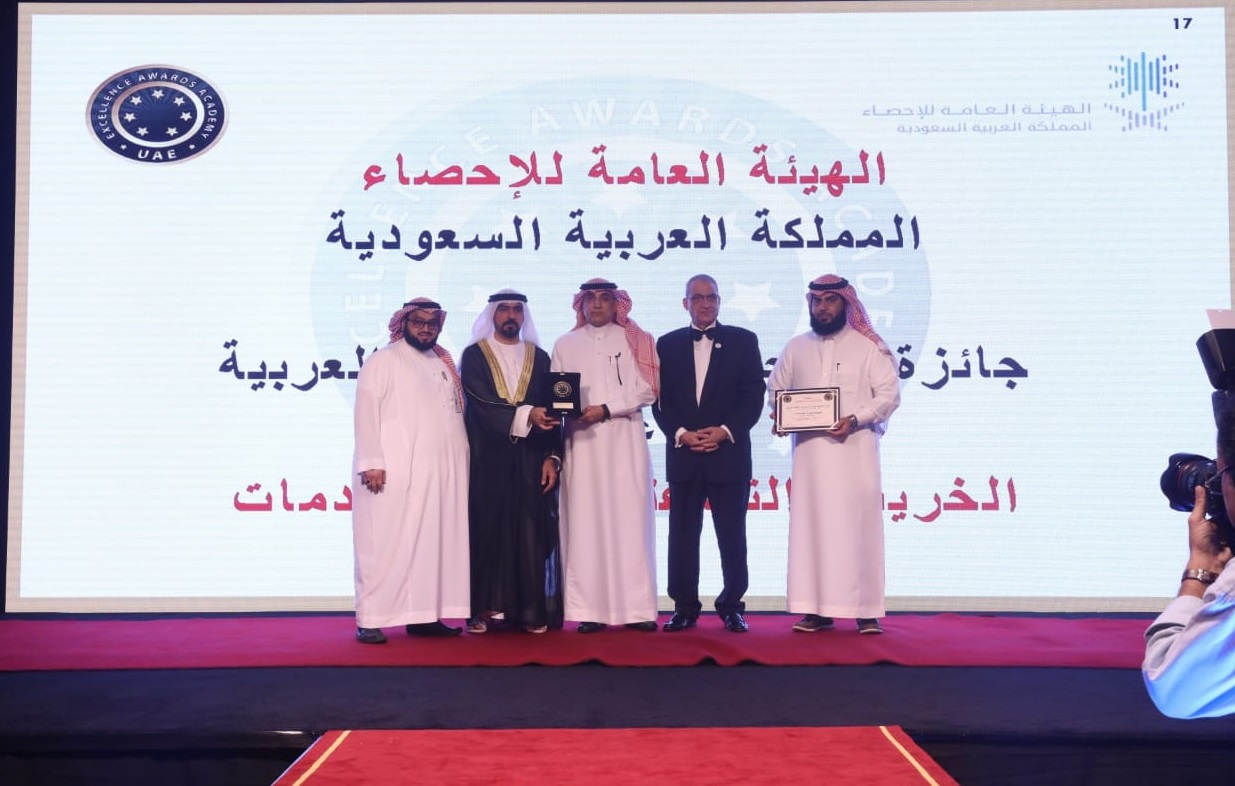
الهيئة العامة للإحصاء تفوز بجائزة الإنجازات الحكومية العربية 2018 م عن خدمة "الخريطة التفاعلية لدليل الخدمات"
Organized by the Excellence Awards Academy at the level of the Arab region
GaStat Wins the Arab Government Achievements Award (2018) for the “Interactive map of the Services Guide”
The General Authority for Statistics (GaStat) won the Arab Government Achievements award for the “Interactive map of the Services Guide” launched recently through GaStat’s official website.
On Tuesday 13/10/1439H., the Excellence Awards Academy in U.A.E, the organizer of the “Afkar” Award for Excellence in Government Innovation for the year 2018 at the level of Arab region, announced selecting the Interactive Map for the Services Guide issued by GaStat, within the top seven excellent services in the region among more than 47 services nominated to win the award.
The Interactive Map of the Services Guide is a technical tool provided by GaStat to view the services’ statistics guide for the Kingdom’s cities and villages. It is the unified reference of all government and private entities available services in different regions of the Kingdom, at the level of cities and villages in the 13 administrative regions. It includes data and information of 16,263 localities (village-city). It includes geographical information and data, Health and education services, data on the availability of administrative, social and agricultural services and public services. The total number of the main tables and its sections included in the guide is (5810) detailed table.
The guide, which was prepared by the contribution of 27 government entities, is one of the most important statistical resources for all data of the Kingdoms’ cities and villages. It is issued by GaStat every 3 years in order to provide unified data and information with official documentation and a high degree of accuracy for all services available in the cities and villages of the Kingdom so that these data are a unified reference for all ministries, government agencies and institutions, students and researchers, and media.
The Interactive map of the Services Guide provides the main data for planners, policy and decision makers according to the localities in the administrative regions. A user can perform a search by selecting the locality that has a specific service in a specific search circle, or selecting the nearest locality on the map. It also provides the possibility of displaying the distribution of services according to the type of service or administrative regions. The service also includes a “Services calculator” which is a statistical tool to conduct statistical calculations based on the databases. The results can be viewed on the map to understand the geospatial distribution of any search, and the results can be extracted on Excel file. The guide contains geographical data and information at the level of the locality (city, village) in addition to the available private and government education services (all three levels and Qura’an schools (boys and girls)), and services of university education, technical education, agricultural education, health education, scientific, professional and commercial institutes, disabled educational institutes, schools of adult education and literacy and kindergartens.
Health services including hospitals, primary health care centers, government and private clinics, Saudi Red Crescent services, data of administrative centers (governorate, center), police and civil defense centers, civil affairs, passports agency, endowments, labor offices, the centres of the General Presidency of the promotion of Virtue and the Prevention of Vices, courts, municipalities Social security offices, social development centers, directorates and branches of the Ministry of Agriculture, branches and offices of agricultural development funds, real estate development, industrial development, , And branches of ministries and agencies as well as public services, including electricity, water, telecommunications, postal services, telegraph offices, tourism, travel and banking services.
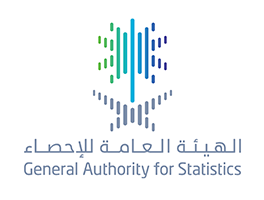
المملكة تشارك في مؤتمر البيانات الضخمة للإحصاءات الأوروبية في بلغاريا
In Order to Benefit from the Best Statistical Practices to Improve the Statistical Sector
Saudi Arabia Participates in the International Conference “Big Data for European Statistics” in Bulgaria
Deputy Chairman of Statistical Innovation and Client Services, Dr.Mohmmad AL-Ahmad represented the General Authority for Statistics (GaStat) in the international conference “Big Data for European Statistics” that was held between 14-15 May 2018 in Sofia, Bulgaria.
Dr.AL-Ahmad clarified that the conference discussed the results of the ESSnet Big Data project; a network project of 22 partners from 20 European countries and it is financed by Eurostat. The project aimed at integrating big data of official statistics through sharing expertise of big data possible sources and creating an implementation plan.
He added that the project started in February 2016 for 28 months until May 2018 and it consists of 10 workgroups: (WP1 to WP8) are for the content, (WP10) is for the coordination and (WP9) is for the entire project.
GaStat accepted the invitation of ESSnet Big Data project in order to learn more about the European countries’ experiences in this field, and to benefit from these practices to serve GaStat’s plans of using big data for producing new statistical indicators in Saudi Arabia. On the other hand, the participants visited the National Statistics Institute NSI in Bulgaria and met Mr. Sergey Tsvetarsky NSI president to view the institute’s activities and statistical works.
GaStat participation in this conference comes within its strategic plans to build international partnership between the Kingdom and a number of distinguished countries in this field, also to benefit from the best international statistical expertise and practices in order to improve the statistical sector in the Kingdom.
GASTAT: More Than 19M Umrah Performers in 2017
(53.6%) Perfom Umrah in Ramadan
GASTAT: More Than 19M Umrah Performers in 2017
On Tuesday Ramadan 13, 1439H corresponding May 29, 2018, The General Authority for Statistics (GASTAT) released the report of Umrah statistics bulletin (2017). It is implemented for the second time by GASTAT as one of the new products associated with the Saudi vision 2030. The report contains many Umrah-related indicators and results which have been taken from the Umrah survey (domestic Umrah performers), and the registered data that pertains to the ministry of Hajj and Umrah (foreign Umrah performers). Through this bulletin, GASTAT and its related governmental partners want to create a database for all domestic and foreign Umrah performers to support decision and policy makers in term of the services provided to Umrah performers.
According to the results of Umrah statistics bulletin 2017, the total number of Umrah performers reached (19.079.306) performers, (6.532.074) of whom came from outside Saudi Arabia as showed in the registered data of the ministry of Hajj and Umrah. On the other hand, the total number of domestic Umrah performers (Saudis and non-Saudis) hit (12.547.232) performers according to the results of Umrah survey conducted by GASTAT. The percentage of Saudi Umrah performers who came from inside Saudi Arabia is (46.9%), whereas non-Saudis who came from inside Saudi Arabia recorded (53.1%). However, the percentage of male domestic Umrah performers registered (64.3%), while females percentage registered (35.7%).
The bulletin results also showed that Ramadan is considered a top season during which Umrah is performed by people from inside Saudi Arabia, as (53.6%) of total Umrah performers performed it in Ramadan. As for Umrah performers from outside, King Abdulaziz airport in Jeddah registered the highest percentage on foreign Umrah performers with (62.51%), while the percentage registered by Prince Mohammed bin Abdulaziz airport in Medina hit (25.7%).
All data of the Umrah survey results are available on GASTAT website www.stats.gov.sa to serve researchers and those who are interested in such data, and to support decision makers by providing them with detailed results.
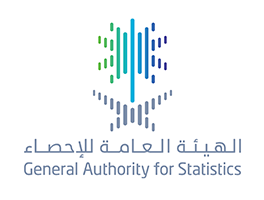
الهيئة العامة للإحصاء تصدر النسخة 53 من الكتاب الإحصائي السنوي 2017م
It includes 20 chapters and data of more than 50 governmental entities
GASTAT releases the 53rd edition of the Statistical Yearbook (2017)
GASTAT released the (53rd) edition of the Statistical Yearbook for 1438/1439 H (2017). It is one of the most important statistical products released by GASTAT to monitor and document statistical data and information, also to shed light on the activities of the governmental bodies and the private sector as well.
Additionally, it reflects the growth rates from year to year and the improvement in the economic, social and population fields. The Statistical Yearbook aims to provide statistical data and information to businessmen, companies, planners, researchers and to the public too. Moreover, it accurately indicates the dimensions of the comprehensive development that were achieved by the Kingdom.
The Statistical Yearbook includes 20 chapters and over 300 tables that contain updated information which were added to improve the display and the documentation of statistical indicators and data. It covers the most significant data and information for different development sectors as well as the main results of the statistical works carried out by GASTAT during the year, also the data received from different statistical departments of more than 50 governmental and private sectors.
Moreover, it includes data about: population and vital characteristic, housing and real-estate, health, training and education, agriculture, water and environment, culture and information, internal trade, social development and services, money, insurance and prices, administrative services, labor market, industry, domestic product and household expenditure, transportation, technology and communication, Islamic affairs, Hajj and Umrah, tourism , entertainment and sport, energy, economic establishments, and data on the budget.
The Statistical Yearbook is not limited to a certain category, for example, the population and vital characteristics chapter is considered one of the significant chapters that includes useful data to conduct a research or to build indicators related to population; and through this, many development requirements can be achieved in all cities and governorates. On the other hand, policy planners and decision makers can benefit from the training and education chapter, the private sector can prepare necessary plans as well to establish more educational institutions. In addition, these data are useful for planners and those who are interested in regulating the labor market.
The social development and services chapter is important for citizens in which it shows the services provided by them. Additionally, this chapter is also useful to social researchers in which it helps them to conduct researches and studies related to social issues.
The findings of the labor market and the social protection’s chapter are very important to prepare plans to regulate the labor market and to find the right solutions. Furthermore, they can be used to conduct economic researches by economists and researches who are interested in this.
Money, insurance and prices chapter can serve a large number of researchers in the economic field to conduct studies that show the inflation rates and the consumption patterns of the population and other indicators.
It is worth mentioning that the first edition of the book was released in 1385 H (1965) and GASTAT usually prepares its chapters based on two main sources: the results of the researches and the field studies carried out by GASTAT and the statistical data received from different statistical departments from various governmental bodies.
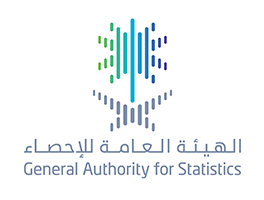
الهيئة العامة للإحصاء: 83.83٪ من إجمالي الأفراد الذين تتراوح أعمارهم من 12 إلى 65 سنة يستخدمون الإنترنت و92٪ يستخدمون الهاتف المتنقل
According to the results of households and individuals’ ICT access and usage survey 2017
GASTAT: 83.83% of individuals (12 to 65 years) use internet, and 92% use cell phone
On Thursday 24th of Sha’aban 1439 H corresponding 10th of May 2018, the General Authority for Statistics has released the report of households and individuals’ ICT access and usage survey results 2017. This report aims at providing recent data and indicators about the communication and information technology activity, which helps decision makers in obtaining necessary statistical data. In addition, it helps in founding a wide range data base that can be used as a reliable reference for ICT activity’ studies and research. It also provides researchers and students with statistical data about the households and individuals ICT activity, so that they can use it in their scientific studies and research that contribute in developing this activity in Saudi Arabia. Not to mention its role in making local, regional, and international comparisons in the households and individuals ICT activity.
Based on the survey results, the percentage of households who can access the internet reached 86.8%. however, households who have fixed phone in their dwellings registered 24.74%. on the other hand, individuals who use the internet recorded 68.13% of total Saudi population, whereas 83.83% of individuals whose ages range between (12 and 65 years) use the internet. As for cell phones, the percentage of individuals who use cell phones is 73.28% of total Saudi population. 91% of individuals whose ages range between (12 and 65 years) use cell phones.
According to the results of this survey, the percentage of households who have a computer in their dwellings reached 46.6% of total Saudi population. However, individuals who use computers registered 24.69%, whereas 30% of total individuals whose ages range between (12 and 65 years) use computers. As for the percentage of households who have a television, they registered 92.67% of total Saudi population.
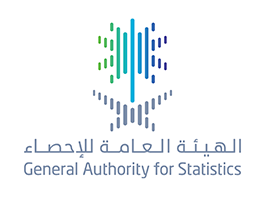
الهيئة العامة للإحصاء تُجري (12) عملاً إحصائياً ميدانياً تستمر حتى مطلع شهر رمضان
Targeting (57350 households) and (33450 establishments)
GASTAT conducts (12) statistical works that last until the beginning of Ramadan
The General Authority for Statistics (GASTAT) has asked all citizens and residents whether individuals or institutions to cooperate with its statisticians who work in the field all over Saudi Arabia, and their work would last until the beginning of Ramadan. GASTAT asserted that all data are dealt with as an information base that developmental decision makers, who work in all related governmental entities, would rely on.
GASTAT spokesman, Mr. Taiseer Almofarrej said that (11317) statisticians are conducting (12) statistical research and surveys in many economic and social fields, and their works will last until the second of Ramadan. These statistical works are targeting (57350 households) and (33450 establishments) in all (13) administrative regions including all cities and governorates.
The results of these works represent a base for making the related developmental decisions. On the level of statistical works that target households, GASTAT is currently conducting the households and individuals’ ICT access and usage survey 2018, the household and population characteristics survey 2018, and the labor force survey, Q2 of 2018.
On the other hand, Almofarrej clarified that the general statistics system issued by the ministers’ cabinet, all data and information provided by any citizen, resident, or establishment are kept and dealt with confidentiality. He added that the people’s cooperation with statisticians would guarantee the success of these works, and using them in supporting economic and social development accordingly.
It is worth mentioning that GASTAT is following certified international standards in choosing the sample of these works. Thus, GASTAT asks all individuals in the statistical society, either households or establishments, to cooperate with the statistician who can be identified by his official card. In addition, there is a communication center that everyone contacts on 920020081
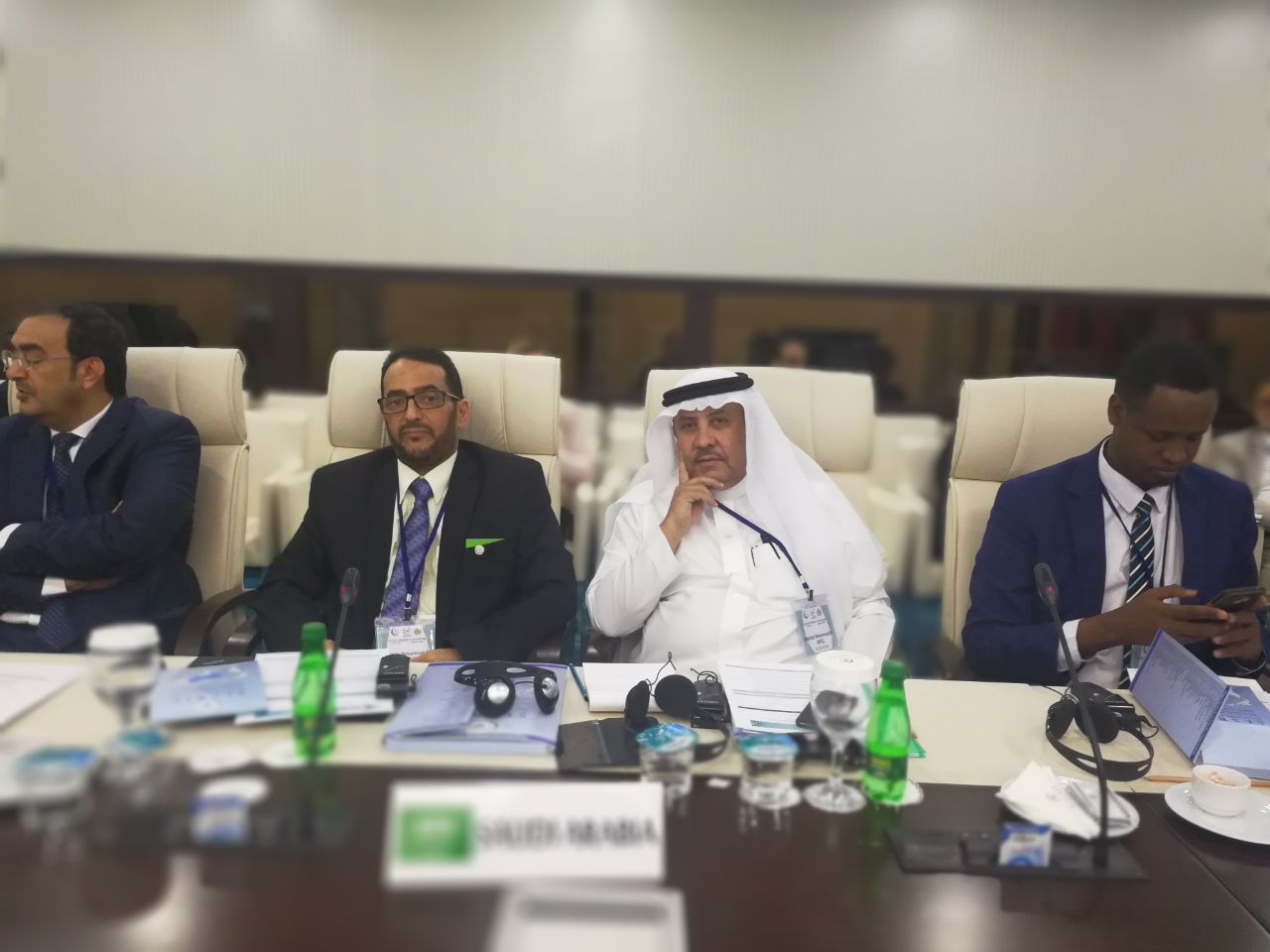
الهيئة العامة للاحصاء تشارك في الدورة السابعة للجنة الإحصائية لمنظمة التعاون الاسلامي
GASTAT participates in the seventh round of OIC-StatCom
The General Authority for Statistics (GASTAT) participates in the meetings of the seventh round of the Organization of Islamic Cooperation Statistical Commission (OIC-StatCom), which are held in Ankara- Turkey, during the period 2-3 May, 2018, corresponding 16-17 Shaaban, 1439H. On the first day of the meetings, the director- general of Methodologies and Statistical Classifications has presented in details how to use administrative records and vital statistics in the next population census which will be conducted in 2020. On the other hand, the vice president for Statistical Works has met the director- general of Statistical, Economic, and Social Research and Training Center for Islamic Countries (SESRIC),
Ambassador Musa KulaKlikaya. During their meeting, they shed light on GASTAT statistical transformation experience, and how can they reflect the experience of Saudi Arabia on other Islamic countries. Moreover, the vice president, and on behalf of all GASTAT staff, has expressed his thanks and gratitude for all the efforts exerted by the center. He assured that the authority can always provide support in different statistical fields. In the end, the center’s director-general has thanked the authority for their initiative, and expressed the center’s desire to sign a memorandum of understanding with GASTAT in the field of statistics.
